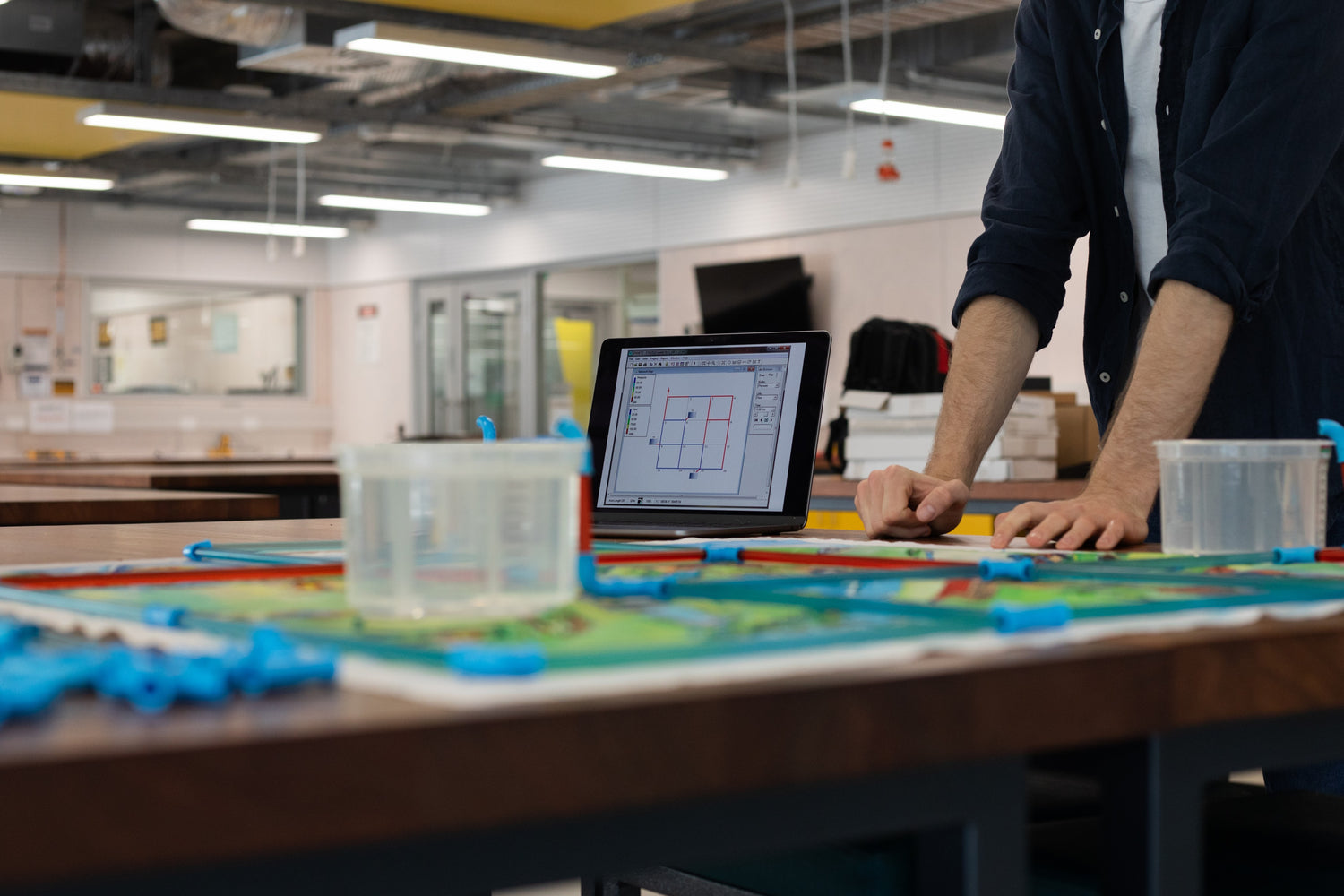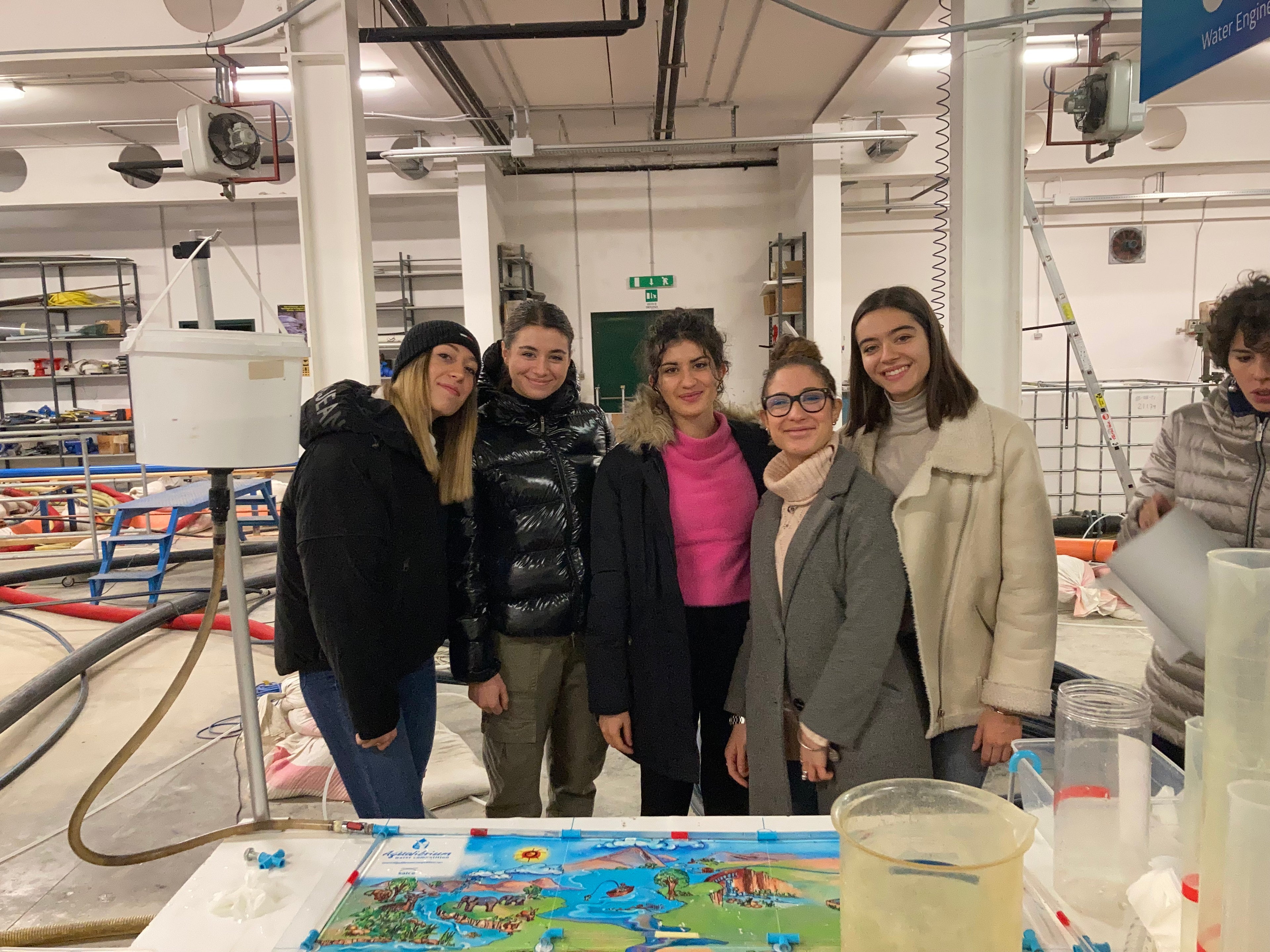
The University Challenge
The Aqualibrium Challenge is used by more than 40 universities across the world for teaching and outreach.
Universities use the Aqualibrium Challenge in their outreach events and open days to explain how different careers can make a difference to people’s lives and the environment.
For instance, engineers design water treatment and supply systems, environmental scientists measure and manage environmental water quality, and teachers and communication professionals educate people about efficient water use and environmental protection.
The Aqualibrium Challenge also excels as a teaching activity in university courses on pipe and network hydraulics. In a typical application, students are first tasked with solving the Aqualibrium challenge using theory and network modelling software. They then build and improve their designs in the lab using the Aqualibrium kit. Finally, students are asked to critically discuss topics such as differences in modelling and physical results, model calibration, size of the solution space, and the relevance to engineering practice.
These activities provide the perfect background for a discussion on the pipe network design problem (including the classic New York Tunnels problem), limitations of hydraulic network theory, and the importance of calibrating hydraulic network models.
The new Aqualibrium Whiteboard Extension adds a whole new dimension to teaching, allowing the hydraulic grade to be visualised for different situations such as pipes in series and parallel, varying ground profiles and pumped systems.

Key Learning Opportunities
- Pipe and network hydraulics
- Modelling of water distribution networks.
- Limitations of hydraulic network theory.
- Size and complexity of the network design problem.
- Importance of network calibration.
- Application of optimisation methods.
- Hydraulic grade line for pipes, pumps and fittings.
-
280 BILLION
Configurations
-
24
Pipe Lines
-
3
Diameters
As Used By

Testimonials
-
“We use Aqualibrium in the course Modeling Drinking Water Networks with EPANET at the Hochschule Karlsruhe. The Aqualibrium kit allows students to clearly see the effects of different diameters and pipe lengths, the presence of air in the pipes and the variation of the pressure in the network. Aqualibrium provides an excellent opportunity for the students to learn in the laboratory with physical components and a realistic engineering problem."
I. A. Julie Schwaller, @vulcan Energy, Karlsruhe, Germany
-
“The Aqualibrium competition serves as an integral component within our Civil and Architectural Engineering curricula at the University of Perugia. The competition provides a tangible experience of the challenging yet rewarding process of designing a water distribution system. While the competition is easy to run, the true challenge lies in the practical execution of the water distribution, which is a substantial task. It does not only demand critical thinking and strategic planning, but also a profound understanding of hydraulic principles and the adept application of specialized software tools. This exercise highlights the pivotal role engineers play in grappling with real-world complexities, as well as the necessity of adhering to engineering principles.”
Prof. Bruno Brunone and A/Prof. Silvia Meniconi, Department of Civil and EnvironmentalEngineering, Università degli Studi di Perugia, Italy
-
“The Aqualibrium competition helps students grasp fundamental concepts in hydraulics through a fun hands-on activity. Students work in teams to build a miniature pipe network(that represents a real-world water supply system) with the objective to deliver an equal amount of water from a single water source to three users given a set of rules (that represent some engineering constraints). This allows students to work in teams, brainstorm, come up and test their designs, reflect on what worked and did not, make changes on the fly, and try again. One of the standout features of the Aqualibrium is that students essentially learn by doing and it allows students to self-asses their understanding and learning.”
Dr Lina Sela, Department of Civil, Architectural, and Environmental Engineering, University of Texas at Austin, USA
-
"The Aqualibrium competition was an extremely important acquisition to improve the teaching of fluid mechanics, applied hydraulics and related courses at my university. In addition, the competition is always one of the liveliest events at our Civil Engineering Week, which attracts students and colleagues from across the country."
Prof. Iran E. Lima Neto, Department of Hydraulic and Environmental Engineering, Federal University of Ceará, Fortaleza, Brazil.
Downloads
Example Project Assignment
Example Epanet Input File
Slides For Post-Assignment Lecture



